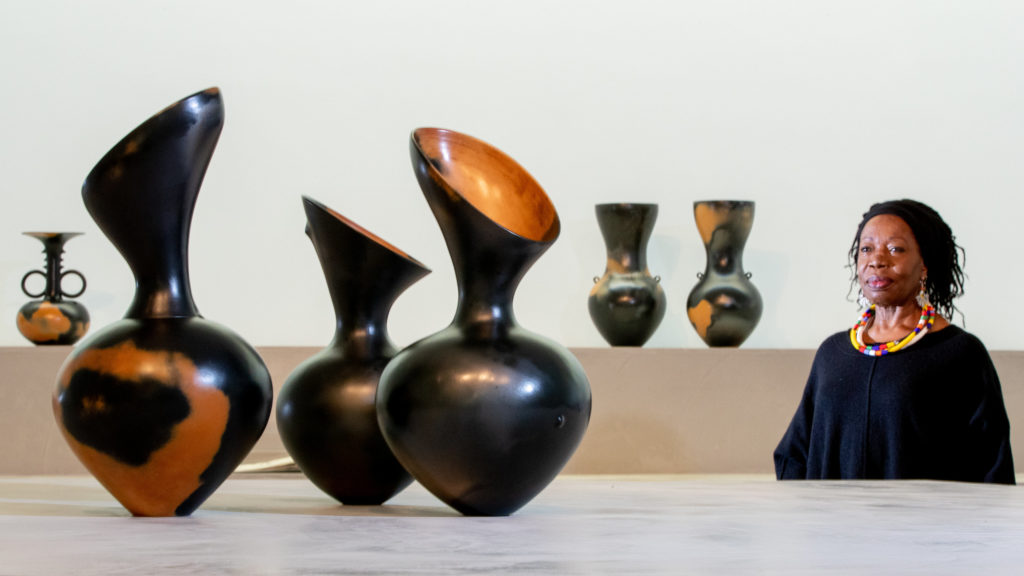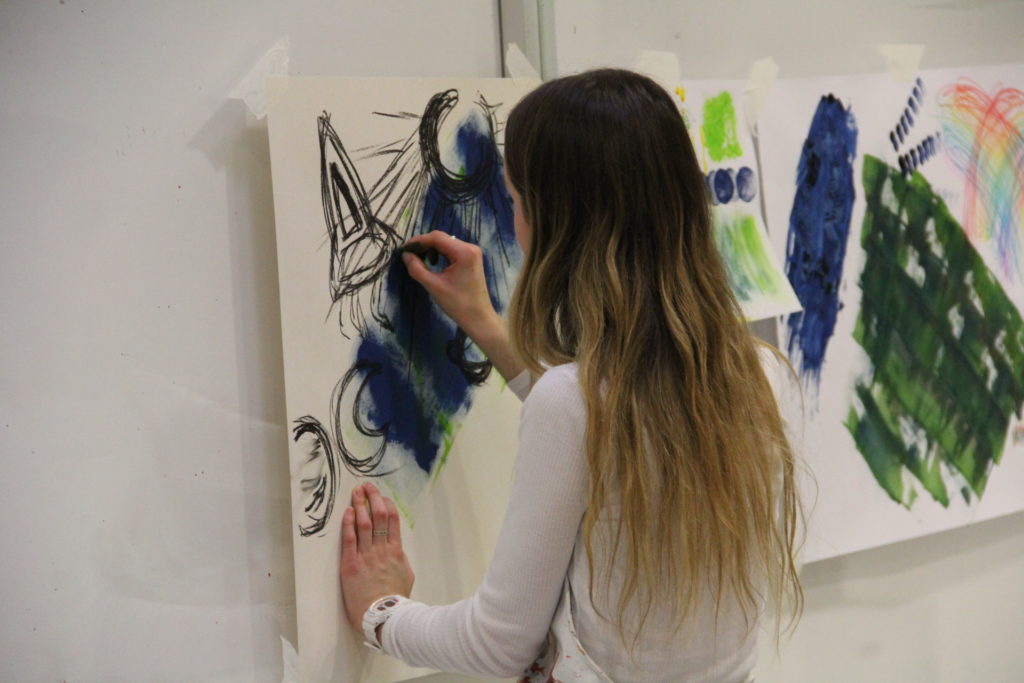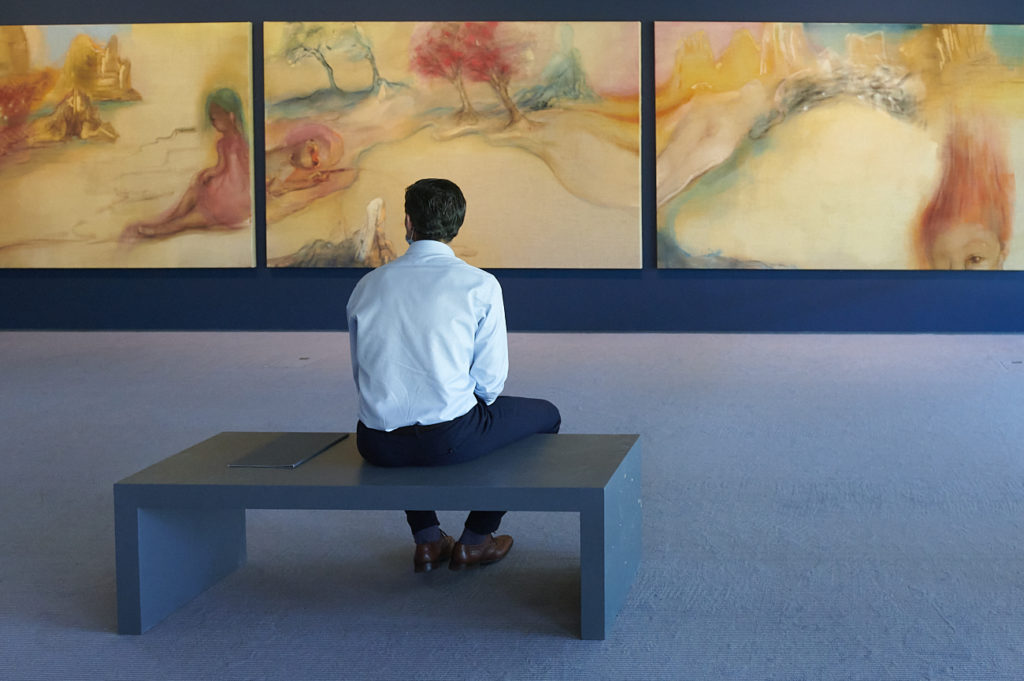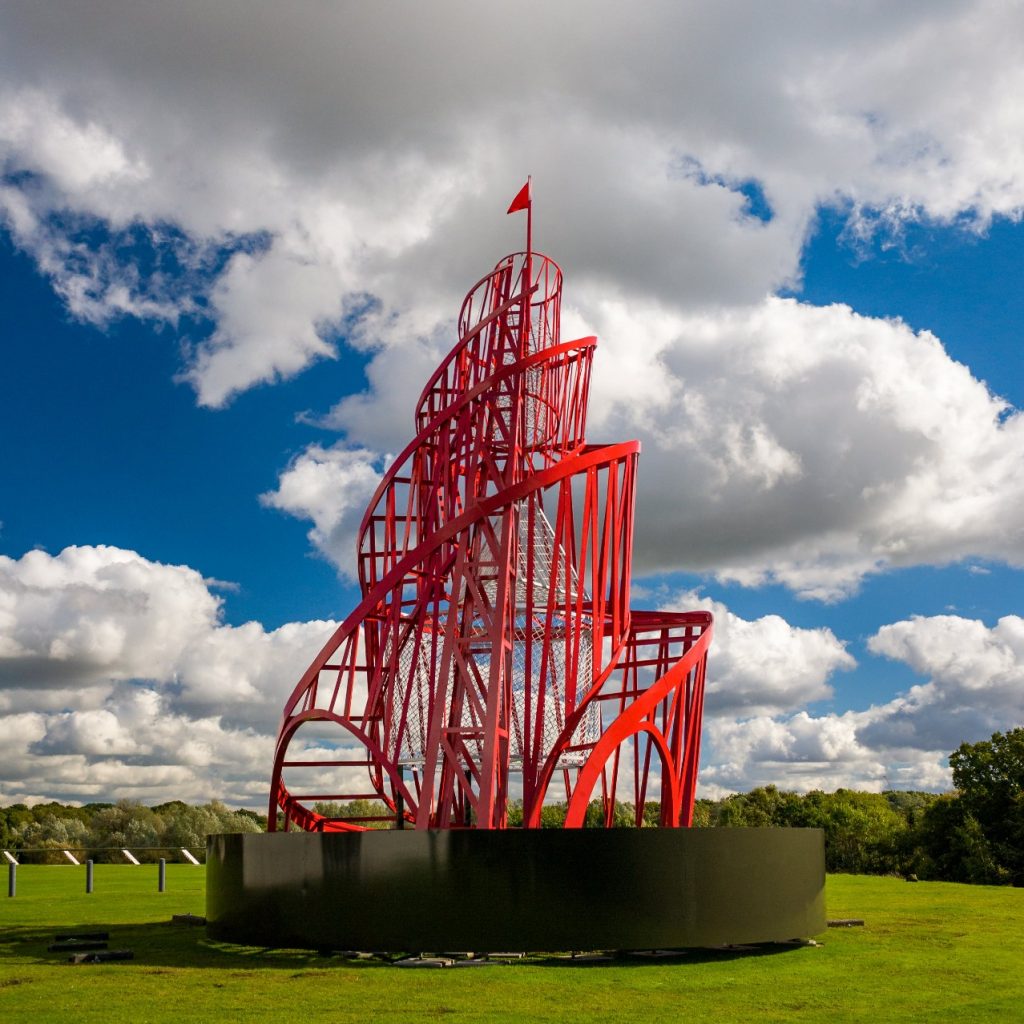I first saw Magdalene’s work in an old catalogue in about 2010. I was really intrigued by it because — and this is the beauty of her work — she is that sort of quiet genius that has worked for a while on her own terms and in her own time, and without real categorisation. So I discovered the work in a catalogue, and then in 2014 I was curating a mixed group show at Salon 94 Gallery in New York featuring various artists, from Lynette Yiadom-Boakye to Alexander Calder. By chance, I spotted another Magdalene Odundo in an old catalogue and it occurred to me that it would be important to include her in this show in New York, because it was something that I loved and the show was all about textures and artworks that have a really personal and tactile element, for example paintings by Barkley L. Hendricks or Lynette Yiadom-Boakye. So I thought it was important to include Magdalene’s ceramics.
Jeanne Greenberg Rohatyn [owner of Salon 94] happened to find one that I could use. It arrived two days before the show that I curated, which was titled More Material, opened and ended up being a very central and important aspect of that show.
Yes it did. I’m lucky because I’m such a fan that I followed the show, from its first inception at the Hepworth Wakefield and then at the Sainsbury Centre. What was incredible was that the show also included objects by other known and less well-known artists, which is something I felt very sympathetic with because I’ve done similar shows, such as Making & Unmaking at Camden Arts Centre and things like that. It is about these artists’ deep connection, and deep similarity in process, integrity and skill.
What I loved about this show was, first of all, being surrounded by so much of her work. It was really quite overwhelming for me. I love the show so much, and I’m also very conscious every step of the way, every time I walk around the show, of how, not just how personal it is for her in the way the things are put together, but also by how much one is surrounded, for the first time, by so much of her work. All her work, spanning over 30 years, creates this deep intellectual, almost spiritual, immensely artistic conversation with the viewer. There’s an air of unexpected genius in every piece.
I feel very privileged, every time I see the show, to be amongst such a number of her pieces, which all speak to each other, and all interact and overlap in ways that are really only possible with some of the greatest artists, from old master painters to contemporary artists.
I have to admit there are many stand-out moments and objects. There are drawings by Henri Gaudier-Brzeska that are just amazing. Seeing Degas’ Little Dancer Aged Fourteen in the context of the Hepworth Wakefield exhibition was amazing, because the colours of the textiles, those warm tea-stained colours, really came to life among her sculptures. Also there were beautiful historical pieces from Kenya, some jewellery, some Yoruba pieces, and El Anatsui’s sculpture was just incredible.
But really, I have to say, the star of the show were the sculptures by Magdalene herself, which were almost like visitors to the show who had decided to stay put, and that’s what I found thrilling.
With Moussavi’s design at the Hepworth Wakefield, it was almost like Magdalene herself had almost merged with this wonderful architect’s practice. There were great views that revealed incredible, magical pieces — both hers and the things that were curated with it, from all these other artists from different eras and different continents. I think it was really the perfect setting for what will be seen as one of the most important contemporary art shows.
I never like to think of Magdalene Odundo as a ceramic artist or a potter. She’s a contemporary artist. Her work, with its textures and its sinuous shapes, they’re sculptures really, and they’re almost as glazed as great paintings. And I think that Moussavi’s architecture really brought that to the fore.
The Sainsbury Centre was a very different setting when it comes to architecture. What David Adjaye has done, I think, is created this sort of vacuum, within which one discovers this work in a different way. And I think it’s very hard to understand how that can be done when you’re dealing with so many beautiful works, which are very, very complicated in execution. What you have to do is create a very simple environment for them that is nonetheless impressive and powerful enough to give gravitas. And I think that’s what the Sainsbury Centre installation has achieved.
I’ve never had this conversation with Magdalene, but I’m sure she’d recognise it. As a child you know very early in life how things are going to affect you, how physical objects, especially art, affect you. Some people are obsessed with other things, but I always knew the importance of seeing things that spoke of these different eras and epochs and different political situations, in a way that manifested them in made objects.
I feel that travel informs the mind but it doesn’t assure you of an open mind. I think that it’s clear from Magdalene’s work that no matter how much she travels, whether consciously or subconsciously, she is very sensitive to art decoratif, fine art and also traditional art practices, whether in African art or traditional Chinese or Middle Eastern art and artefacts. And she was curious enough to learn more about it, not just in relation to how things were made, but also what they meant and how they were used.
The film by Anthony Slayter-Ralph that I watched at your exhibition explained a lot. Odundo wasn’t giving away too much, but she was. And what was incredible was this notion, which she speaks of, about utility not being the raison d’être of whatever she was making. With a lot of the great artists that have worked in ceramics such as Lucie Rie, you find that there was a lot of concentration on the usable element of their pieces. Whereas with Magdalene, you realise when you look at the openings in a lot of her works of art that they are impossible to use. It’s very conceptual. It’s conceptual art in the form of clay sculptures and I found that really interesting and actually quite avant-garde in many ways. Her work is quite out of the mould, but also very much filled with warmth and integrity in a way that great sculptures are.



